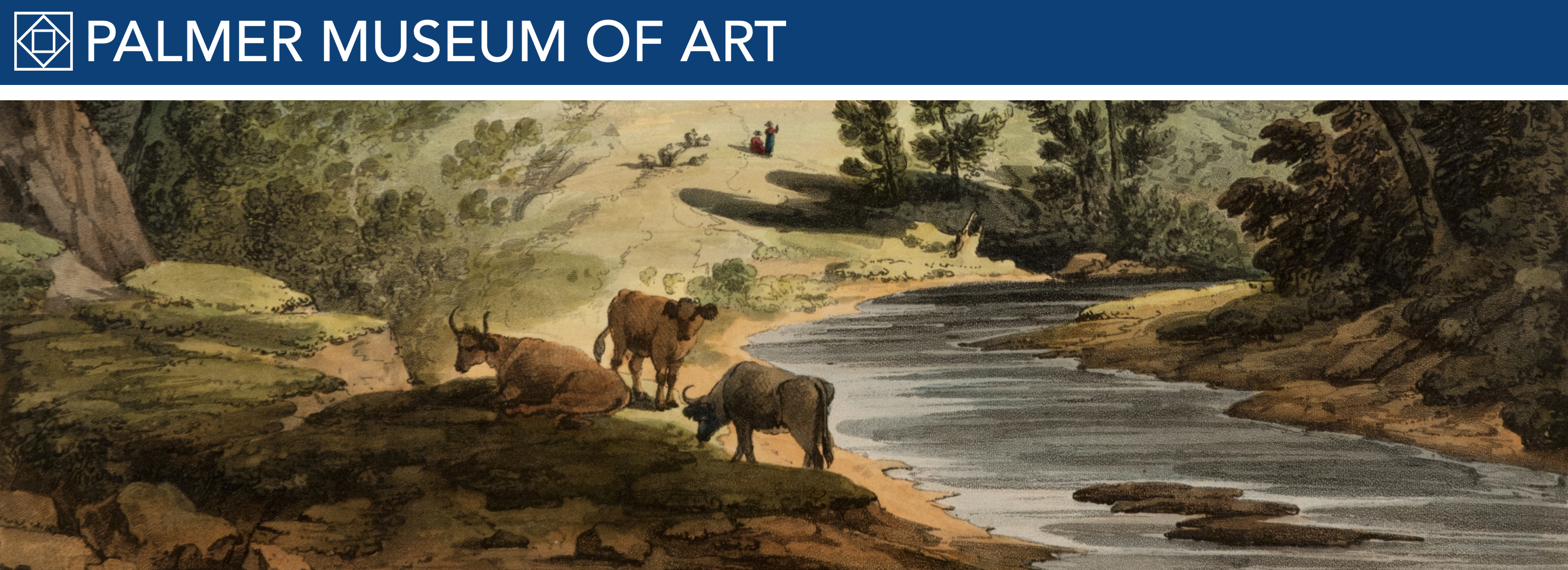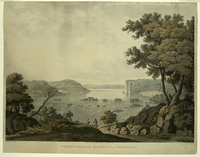Pennsylvania Scenery
George Cooke
English, 1781–1834
After Thomas Cartwright
British, active c. 1792–1816
After George Beck
English, 1748–1812
Wright’s Ferry, on the Susquehanna, Pennsylvania
Etching and engraving on steel with hand coloring, 5 3/8 x 7 3/4 inches
From Scenery of America, North and South, volume 5 of A series of views of the most remarkable localities, celebrated for picturesque beauty or historical and other associations
Published in London April 1, 1812, by Longman, Hurst, Rees, Orme & Brown
Partial gift and purchase from John C. O’Connor and Ralph M. Yeager
86.605
The first ferry across the Susquehanna River was opened in 1730 by John Wright, a businessman and politician who a year earlier had helped to establish Lancaster County. The ferry was located just south of Chickies Rock (formerly spelled “Chiques,” from the Susquehannock name for a nearby creek, Chiquesalunga), an impressive elevation abutting the eastern shore of the river, which in actuality does not rise in quite the dramatic manner depicted here, at the distant right. The town that developed as a result of Wright’s enterprise, initially called Wright’s Ferry, was renamed Columbia in 1788 in a failed effort to make it the new nation’s capital. (When the issue was taken up by Congress a year later, Columbia’s bid fell one vote short.)
The hand coloring—not original to the print—unfortunately obscures the picturesque quality of the view, which George Cooke managed to preserve in his steel engraving after Thomas Cartwright’s considerably larger aquatint, published just a few years earlier (see image below). The vista would not endure. By the time Cooke’s version appeared in Scenery of America, North and South, plans were underway for the construction of a covered bridge to link Columbia with Wrightsville, on the western bank of the Susquehanna. Though completed in 1814, this and subsequent bridges did not deter the operation of Wright’s ferry, which continued to transport people and goods across the river until 1901.


